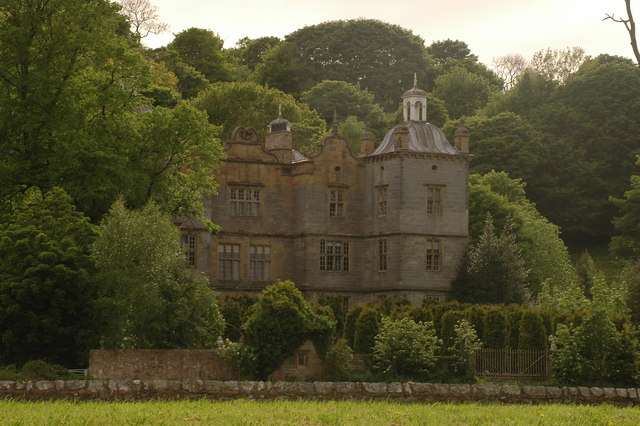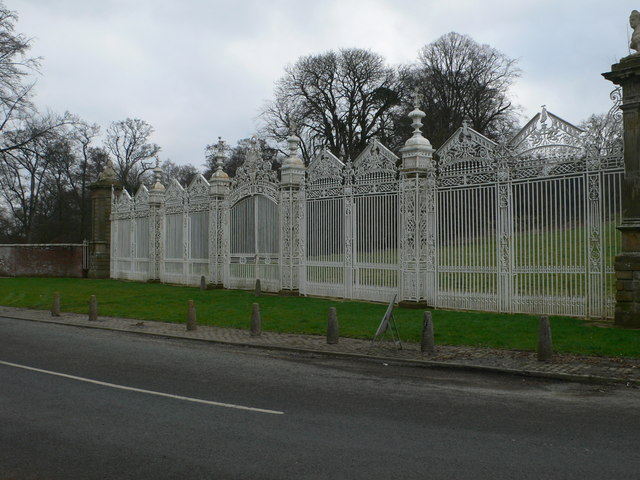|
Pontblyddyn
Pontblyddyn is a small village outside Leeswood, in Flintshire, Wales and is situated around 8 miles from Wrexham. Plas Teg, one of the most important Jacobean era The Jacobean era was the period in English and Scottish history that coincides with the reign of James VI of Scotland who also inherited the crown of England in 1603 as James I. The Jacobean era succeeds the Elizabethan era and precedes the Ca ... houses in Wales, is located near the village. References Villages in Flintshire {{Flintshire-geo-stub ... [...More Info...] [...Related Items...] OR: [Wikipedia] [Google] [Baidu] |
Plas Teg
Plas Teg is a Grade I listed Jacobean house in Wales. It is near the village of Pontblyddyn, Flintshire between Wrexham and Mold. It is considered to be one of the finest examples of Jacobean architecture in Wales, and the finest in North Wales. History The house was built by Sir John Trevor I, a prominent courtier of King James I, in about 1610.Baker, Mark"Plas Teg: Exploring the hall's history" BBC. 2 March 2010. Sir John died in 1629 and his wife in 1643, leaving the house unoccupied as the English Civil War broke out. It was twice raided by the Roundheads, but continued to be passed down to Trevor descendants until the early 20th century. During the Second World War the house was requisitioned by the War Office to billet soldiers. In 1945, it was sold to an auctioneers company, which used it for storage. By the early 1950s, Plas Teg was in a state of advanced decay and under threat of demolition. Following a public outcry, the derelict house received a Grade I listi ... [...More Info...] [...Related Items...] OR: [Wikipedia] [Google] [Baidu] |
Flintshire
, settlement_type = County , image_skyline = , image_alt = , image_caption = , image_flag = , image_shield = Arms of Flintshire County Council.svg , shield_size = 100px , shield_alt = , shield_link = , image_blank_emblem = , blank_emblem_alt = , image_map = File: Flintshire UK location map.svg , map_alt = , map_caption = Flintshire shown within Wales , coordinates = , subdivision_type = Sovereign state , subdivision_name = , subdivision_type1 = Constituent country , subdivision_type2 = Preserved county , subdivision_name1 = , subdivision_name2 = Clwyd , established_title ... [...More Info...] [...Related Items...] OR: [Wikipedia] [Google] [Baidu] |
Clwyd
Clwyd () is a preserved county of Wales, situated in the north-east corner of the country; it is named after the River Clwyd, which runs through the area. To the north lies the Irish Sea, with the English ceremonial counties of Cheshire to the east and Shropshire to the south-east. Powys and Gwynedd lie to the south and west respectively. Clwyd also shares a maritime boundary with Merseyside along the River Dee. Between 1974 and 1996, a slightly different area had a county council, with local government functions shared with six district councils. In 1996, Clwyd was abolished, and the new principal areas of Conwy County Borough, Denbighshire, Flintshire and Wrexham County Borough were created; under this reorganisation, "Clwyd" became a preserved county, with the name being retained for certain ceremonial functions. This area of north-eastern Wales has been settled since prehistoric times; the Romans built a fort beside a ford on the River Conwy, and the Normans and Welsh dis ... [...More Info...] [...Related Items...] OR: [Wikipedia] [Google] [Baidu] |
Delyn (Assembly Constituency)
Delyn is a constituency of the Senedd. It elects one Member of the Senedd by the first past the post method of election. Also, however, it is one of nine constituencies in the North Wales electoral region, which elects four additional members, in addition to nine constituency members, to produce a degree of proportional representation for the region as a whole. Boundaries The constituency was created for the first election to the Assembly, in 1999, with the name and boundaries of the Delyn Westminster constituency. It is entirely within the preserved county of Clwyd. As created in 1999, the North Wales region included the constituencies of Alyn and Deeside, Caernarfon, Clwyd West, Clwyd South, Conwy, Delyn, Vale of Clwyd, Wrexham and Ynys Môn. For the 2007 election the region included Aberconwy, Alyn and Deeside, Arfon, Clwyd South, Clwyd West, Delyn, Vale of Clwyd, Wrexham and Ynys Môn. Voting In elections for the Senedd, each voter has two votes. The ... [...More Info...] [...Related Items...] OR: [Wikipedia] [Google] [Baidu] |
Delyn (UK Parliament Constituency)
Delyn is a constituency represented in the House of Commons of the UK Parliament since 2019 by Rob Roberts, who was elected as a Conservative, but currently sits as an Independent following sexual harassment allegations. The Delyn Senedd constituency was created with the same boundaries in 1999 (as an Assembly constituency). Constituency profile The seat comprises the mostly industrial Deeside communities of Mostyn, Flint, Mold, Northop and Holywell. Residents are slightly less affluent than the UK average. Boundaries 1983–1997: The Borough of Delyn, and the Borough of Rhuddlan wards of Meliden, Prestatyn Central, Prestatyn East, Prestatyn North, and Prestatyn South West. 1997–2010: The Borough of Delyn. 2010–present: The Flintshire electoral divisions of Argoed, Bagillt East, Bagillt West, Brynford, Caerwys, Cilcain, Ffynnongroyw, Flint Castle, Flint Coleshill, Flint Oakenholt, Flint Trelawney, Greenfield, Gronant, Gwernaffield, Gwernymynydd, Halkyn, Holywell ... [...More Info...] [...Related Items...] OR: [Wikipedia] [Google] [Baidu] |
Leeswood
Leeswood ( cy, Coed-llai) is a village, community and electoral ward in Flintshire, Wales, about four miles from the historic market town of Mold. At the 2001 Census, the population was 2,143, reducing slightly to 2,135 at the 2011 Census. It was the centre of attention during the Mold Riot of 1869, where the owners of the mine refused to allow the speaking of the Welsh language in the mines. Around a quarter of Leeswood's resident population has some knowledge of the Welsh language, exceeding the county's average of 21.4%. In all categories of linguistic competency, the ward performs around the Flintshire average, although the proportion of those able only to understand spoken Welsh is higher than the county and national average. The famous White Gates of Leeswood Hall were attributed to the Davies brothers of Wrexham. The family of smiths were known in the 18th Century for their high-quality work using wrought-iron. The Wynne baronets were later to live in Leeswood Hall a ... [...More Info...] [...Related Items...] OR: [Wikipedia] [Google] [Baidu] |
Wrexham
Wrexham ( ; cy, Wrecsam; ) is a city and the administrative centre of Wrexham County Borough in Wales. It is located between the Welsh mountains and the lower Dee Valley, near the border with Cheshire in England. Historically in the county of Denbighshire, and later the county of Clwyd in 1974, it has been the principal settlement of Wrexham County Borough since 1996. Wrexham has historically been one of the primary settlements of Wales. At the 2011 Census, it had an urban population of 61,603 as part of the wider Wrexham built-up area which made it Wales's fourth largest urban conurbation and the largest in north Wales. The city comprises the local government communities of Acton, Caia Park, Offa and Rhosddu. Wrexham's built-up area extends further into villages like Bradley, Brymbo, Brynteg, Gwersyllt, New Broughton, Pentre Broughton and Rhostyllen. Wrexham was likely founded prior to the 11th century and developed in the Middle Ages as a regional centre for t ... [...More Info...] [...Related Items...] OR: [Wikipedia] [Google] [Baidu] |
Jacobean Era
The Jacobean era was the period in English and Scottish history that coincides with the reign of James VI of Scotland who also inherited the crown of England in 1603 as James I. The Jacobean era succeeds the Elizabethan era and precedes the Caroline era. The term "Jacobean" is often used for the distinctive styles of Jacobean architecture, visual arts, decorative arts, and literature which characterized that period. James as King of England The practical if not formal unification of England and Scotland under one ruler was an important shift of order for both nations, and would shape their existence to the present day. Another development of crucial significance was the foundation of the first British colonies on the North American continent, at Jamestown, Virginia in 1607, in Newfoundland in 1610, and at Plymouth Colony in Massachusetts in 1620, which laid the foundation for future British settlement and the eventual formation of both Canada and the United States of America. ... [...More Info...] [...Related Items...] OR: [Wikipedia] [Google] [Baidu] |


